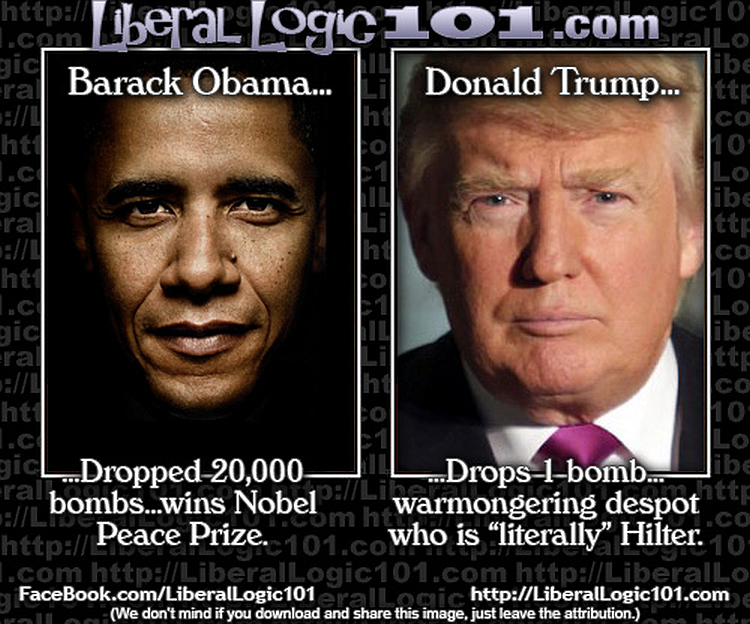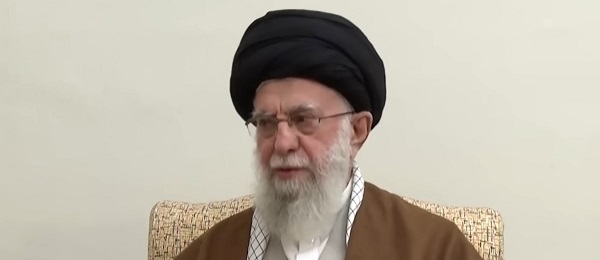conflict
Inspired by Ukraine, Armed by the U.S., Reinvented by Tech: Taiwan’s New Way of War

 Sam Cooper
Sam Cooper
HIMARS Test Marks Taiwan’s Move to Jungle-Hardened, Tech-Backed Defense Doctrine
The HIMARS roar that echoed off the coastal mountains of southern Taiwan this week was more than a weapons test. It was a declaration of deterrence.
From their perch at Jiupeng military base—where steep green ridges descend toward the Pacific—Taiwanese forces fired the U.S.-made rocket artillery system in a live-fire display designed to show how the island is transforming itself into a fortress of modern asymmetric warfare. The Taiwanese unit conducting the test had trained with U.S. forces in Oklahoma in 2024, and this week’s exercise marked the first time they demonstrated their proficiency with HIMARS on home soil.
The HIMARS platform—demonstrated in footage provided to The Bureau from Taiwan Plus—signals a decisive shift toward a mobile, nimble defensive force designed to face overwhelming scale. Unlike fixed missile sites or air bases—prime targets expected to be destroyed within hours of a PLA first-wave assault—truck-mounted HIMARS units can slip into position, launch a strike, and quickly vanish into Taiwan’s jungle-thick terrain and cliffside roads. These launchers are meant to hide, hit, and move—relying on camouflage, speed, and the natural topography of the island to stay alive and strike again.
This transformation had been quietly underway for years. In September 2023, The Bureau met with Taiwanese military strategists and international journalists at a closed-door roundtable in Taipei. Among them was a Ukrainian defense consultant—invited to share hard-won battlefield lessons from Kyiv’s resistance. The strategist told the group that the most crucial lesson for Taiwan was psychological: to instill in citizens and soldiers alike the will to prepare for aggression that seems impossible and illogical, before it arrives. “You must believe the worst can happen,” the Ukraine vet said.
That same week in Taipei, Taiwan’s then-Foreign Minister Joseph Wu made the case directly in an interview:
“There’s a growing consensus among the key analysts in the United States and also in Taiwan that war is not inevitable and the war is not imminent,” Wu said. “And we have been making significant investment in our own defense—not just increasing our military budget, but also engaging serious military reforms, in the sense of asymmetric strategy and asymmetric capability.”
That principle now guides Taiwan’s evolving force posture. The May 12 HIMARS test—launching precision-guided rockets into a Pacific exclusion zone—was the first public demonstration of the mobile artillery system since the U.S. delivered the first batch in late 2024. With a range of 300 kilometers, HIMARS provides not only mobility but standoff power, allowing Taiwan’s forces to strike amphibious staging areas, beachheads, and ships from hardened inland positions. Lockheed Martin engineers observed the drills, which were broadcast across Taiwanese news networks as both a military signal and psychological campaign.
The live-fire exercise also marked the debut of the Land Sword II, a domestically developed surface-to-air missile system designed to counter diverse aerial threats, including cruise missiles, aircraft, and drones. Land Sword II adds a mobile, all-weather air defense layer to Taiwan’s increasingly dense multi-domain network. By deploying it alongside HIMARS, Taiwan demonstrated its commitment to building overlapping shields—striking at invading forces while protecting its launch platforms from aerial suppression.
But these new missile systems are only the tip of the spear.
Taiwan’s military has quietly abandoned the vestiges of a Cold War posture centered on fleet battles and long-range missile parity with the mainland. Defense officials now concede that attempts to match Beijing plane-for-plane or ship-for-ship are a dead end. Instead, inspired by the “porcupine” concept outlined by retired U.S. Marines and intelligence officials, Taiwan is remaking itself into a smart, lethal archipelago fortress—one where unmanned drones, dispersed missile cells, and underground fiber-linked command posts neutralize China’s numerical advantage.
Wu, who now serves as Secretary-General of Taiwan’s National Security Council, has been one of the doctrine’s most consistent advocates. In his writings and interviews, Wu points to Ukraine’s ability to hold off a vastly superior invader through mobility, deception, and smart munitions. “We are not seeking parity. We are seeking survivability,” he wrote in Foreign Affairs. “And if we survive, we win.”
A New Arsenal of Ideas: From Silicon Valley to the Taiwan Strait
If Ukraine showed the value of agile, off-the-shelf technologies on the battlefield, Taiwan seems poised to go a step further—by integrating cutting-edge systems developed not by defense contractors, but by Silicon Valley insurgents.
Among the most closely watched innovators is Palmer Luckey, the former Oculus founder whose defense firm, Anduril Industries, is quietly revolutionizing battlefield autonomy. Through its Dive Technologies division and flagship Ghost and Bolt drone platforms, Anduril builds AI-guided aerial and underwater drones capable of swarming enemy ships, submarines, and even mines—exactly the kinds of systems Taiwan could deploy along its maritime approaches and chokepoints.
Luckey, who visited Japan and South Korea in early 2025 to brief U.S. allies on asymmetric AI warfare, has warned that in a Taiwan invasion scenario, the side with better autonomous targeting and tracking could determine victory before a single human-fired missile is launched.
“The PLA is betting big on AI,” he told Business Insider. “If Taiwan and the U.S. don’t match that, we’re done.”
Much of this strategy finds intellectual backing in The Boiling Moat, a 2024 strategy volume edited by former U.S. National Security Advisor Matt Pottinger. The book proposes a multi-layered defense of Taiwan that includes hardened ground troops, swarming drones, portable anti-ship missiles, and AI battlefield networking.
Pottinger argues that Taiwan must become “the toughest target on earth”—a phrase now common among Taiwanese officers briefing American delegations. Speaking to NPR last year, Pottinger noted that Taiwan’s survival doesn’t rest on matching China’s power, but on “convincing Beijing that the price of conquest will be far too high to bear.”
The Bureau is a reader-supported publication.
To receive new posts and support my work, consider becoming a free or paid subscriber.
Invite your friends and earn rewards
conflict
Obama Dropped Over 26K Bombs Without Congressional Approval

@miss_stacey_ Biden, Clinton, Obama & Harris on Iran #biden #clinton #obama #harris #trump #iran #nuclear
Iran has been the target for decades. Biden, Harris, and Clinton—all the Democrats have said that they would attack Iran if given the opportunity. It appears that Donald Trump is attempting to mitigate a potentially irresolvable situation. As he bluntly told reporters: We basically — we have two countries that have been fighting so long and so hard that they don’t know what the f‑‑‑ they’re doing.”
A portion of the nation believes Trump acted like a dictator by attacking Iran without Congressional approval. I explained how former President Barack Obama decimated the War Powers Resolution Act when he decided Libya was overdue for a regime change. The War Powers Act, or War Powers Resolution of 1973, grants the POTUS the ability to send American troops into battle if Congress receives a 48-hour notice. The stipulation here is that troops cannot remain in battle for over 60 days unless Congress authorizes a declaration of war. Congress could also remove US forces at any time by passing a resolution.
Libya is one of seven nations that Obama bombed without Congressional approval, yet no one remembers him as a wartime president, as the United States was not technically at war. Over 26,000 bombs were deployed across 7 nations under his command in 2016 alone. Libya, Afghanistan, Syria, Yemen, Somalia, Iraq, and Pakistan were attacked without a single vote. Donald Trump’s recent orders saw 36 bombs deployed in Iran.
The majority of those bombings happened in Syria, Libya, and Iraq under the premise of targeting extremist groups like ISIS. Drone strikes were carried out across Somalia, Yemen, and Pakistan as the Obama Administration accused those nations of hosting al-Qaeda affiliated groups. Coincidentally, USAID was also providing funding to those groups.
The 2001 Authorization for Use of Military Force (AUMF) was initially implemented to hunt down the Taliban and al-Qaeda after the 9/11 terrorist attacks. Obama broadened his interpretation of the AUMF and incorporated newly formed militant groups that were allegedly expanding across the entire Middle East. The Bureau of Investigative Journalism believes there were up to 1,100 civilian casualties in Pakistan, Yemen, and Somalia. Thousands of civilians died in Syria and Iraq but the death toll was never calculated. At least 100 innocent people died in the 2016 attacks in Afghanistan alone.
The government will always augment the law for their personal agenda. The War Powers Resolution was ignored and the AUMF was altered. Congress was, however, successful in preventing Obama from putting US troops on the ground and fighting a full-scale war. In 2013, Obama sought congressional approval for military action in Syria but was denied. Obama again attempted to deploy troops in 2015 but was denied. Congress has to redraft the AUMF to specifically prevent Obama from deploying troops in the Middle East. “The authorization… does not authorize the use of the United States Armed Forces on the ground in Syria for the purpose of combat operations.” Obama attempted to redraft the AUMF on his own by insisting he would prohibit “enduring offensive ground combat operations” or long-term deployment of troops. He was met with bipartisan disapproval as both sides believed he was attempting to drag the United States into another unnecessary war.
The United States should not be involved in any of these battles, but here we are. Those living in fear that Donald Trump is a dictator fail to recognize that past leadership had every intention of sending American men and women into battle unilaterally without a single vote cast.
conflict
The Oil Price Spike That Didn’t Happen


From the Daily Caller News Foundation
By David Blackmon
What if they gave an oil price spike and nobody came? That is admittedly kind of a lame play on an old saying about parties, but it’s exactly what has happened over the two weeks since June 12, when Israel launched its initial assault on Iran.
At that day’s close of trading, the domestic U.S. WTI price sat at $68.04 per barrel. As of this writing on June 24, the price stands at $64.50. That’s not just the absence of a price spike, it is the opposite of one, a drop of 5% in just two weeks.
So, what happened? Why didn’t crude prices spike significantly? For such a seemingly complex trading market that is impacted daily by a broad variety of factors, the answer here is surprisingly simple, boiling down to just two key factors.
Dear Readers:
As a nonprofit, we are dependent on the generosity of our readers.
Please consider making a small donation of any amount here.
Thank you!
- Neither Israel nor the United States made an effort to target Iran’s refining or export infrastructures.
- Despite some tepid, sporadic saber rattling by Iranian officials, they mounted no real effort to block the flow of crude tankers through the region’s critical choke point, the Strait of Hormuz.
Hitting Iran’s infrastructure could have taken its substantial crude exports – which the International Energy Agency estimates to be 1.7 million barrels per day – off the global market, a big hit. Shutting down the Strait of Hormuz, through which about 20% of global crude supplies flow every day, would have been a much bigger hit, one that would have set prices on an upward spiral.
But the oil kept flowing, muting the few comparatively small increases in prices which did come about.
Respected analyst David Ramsden-Wood, writing at his “HotTakeOfTheDay” Substack newsletter, summed it up quite well. “Oil is still structurally bearish. U.S. producers are in PR mode—talking up ‘Drill, baby, drill’ while actually slowing down. Capex is flat to declining. Rig counts are down. Shareholders want returns, not growth. So we’re left with this: Tension in the Middle East, no supply impact, and U.S. production that’s quietly rolling over. Oil shrugged.”
There was a time, as recently as 10 years ago, when crude prices would have no doubt rocketed skywards at the news of both the commencement of Israel’s initial June 12 assault on Iran’s military and political targets and of last Saturday’s U.S. bombing operation. In those days, we could have expected crude prices to go as high as $100 per barrel or even higher. Markets used to really react to the “tension in the Middle East” to which Ramsden-Wood refers, in large part, because they had no real way to parse through all the uncertainties such events might create.
Now it’s different. Things have changed. The rise of machine learning, AI and other technological and communications advancements has played a major role.
In the past, a lack of real-time information during any rise in Middle East tensions left traders in the dark for some period of time – often extended periods – about potential impacts on production in the world’s biggest oil producing region. But that is no longer the case. Traders can now gauge potential impacts almost immediately.
That was especially true throughout this most recent upset, due to President Donald Trump’s transparency about everything that was taking place. You were able to know exactly what the U.S. was planning to do or had done just by regularly pressing the “refresh” button at Trump’s Truth Social feed.
Tim Stewart, President of the D.C.-based U.S. Oil and Gas Association, has a term for this. “The Markets are becoming much better at building the ‘47 Variable’ into their short-term models,” he said in an email. “This is not a Republican Administration – it is a Disrupter Administration and disruption happens both ways, so the old playbooks just don’t apply anymore. Traders are taking into account a President who means what he says, and it is best to plan for it.”
Add to all that the reality that a high percentage of crude trading is now conducted via automated, AI-controlled programs, and few trades are any longer made in the dark.
Thus, the world saw a price spike which, despite being widely predicted by many smart people, didn’t happen, and the reasons why are pretty simple.
David Blackmon is an energy writer and consultant based in Texas. He spent 40 years in the oil and gas business, where he specialized in public policy and communications.
(Featured Image Media Credit: Screen Capture/PBS NewsHour)
-

 Bruce Dowbiggin19 hours ago
Bruce Dowbiggin19 hours agoWhat Connor Should Say To Oilers: It’s Not You. It’s Me.
-

 Business20 hours ago
Business20 hours agoFederal fiscal anchor gives appearance of prudence, fails to back it up
-

 Business18 hours ago
Business18 hours agoThe Passage of Bill C-5 Leaves the Conventional Energy Sector With as Many Questions as Answers
-

 Alberta16 hours ago
Alberta16 hours agoAlberta poll shows strong resistance to pornographic material in school libraries
-

 Business14 hours ago
Business14 hours agoCanada should already be an economic superpower. Why is Canada not doing better?
-

 Crime15 hours ago
Crime15 hours agoFlorida rescues 60 missing kids in nation’s largest-ever operation
-

 Banks17 hours ago
Banks17 hours agoScrapping net-zero commitments step in right direction for Canadian Pension Plan
-

 Also Interesting2 days ago
Also Interesting2 days agoDodgers Hitting Their Stride: Winning Streak Sets Stage for Key Matchups






